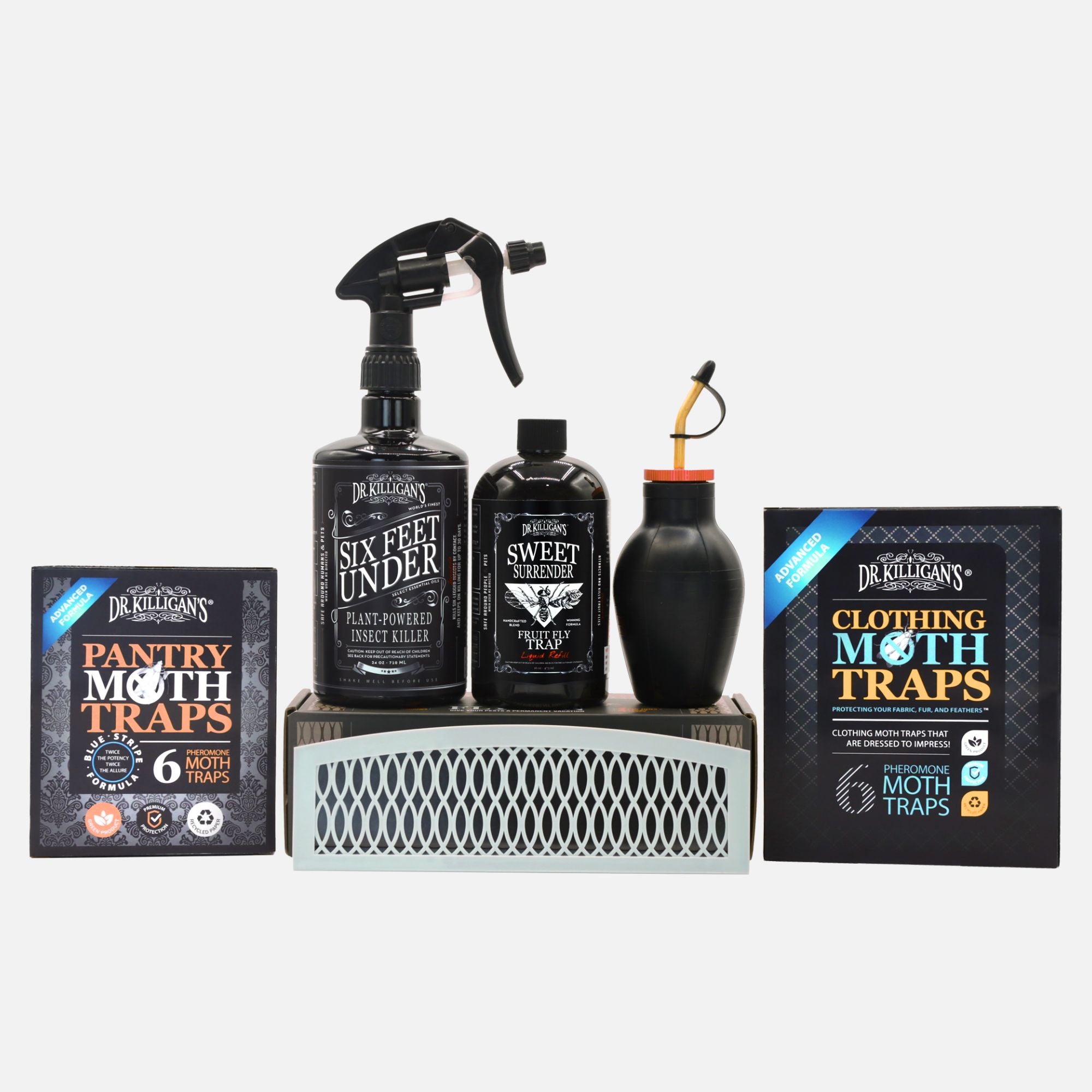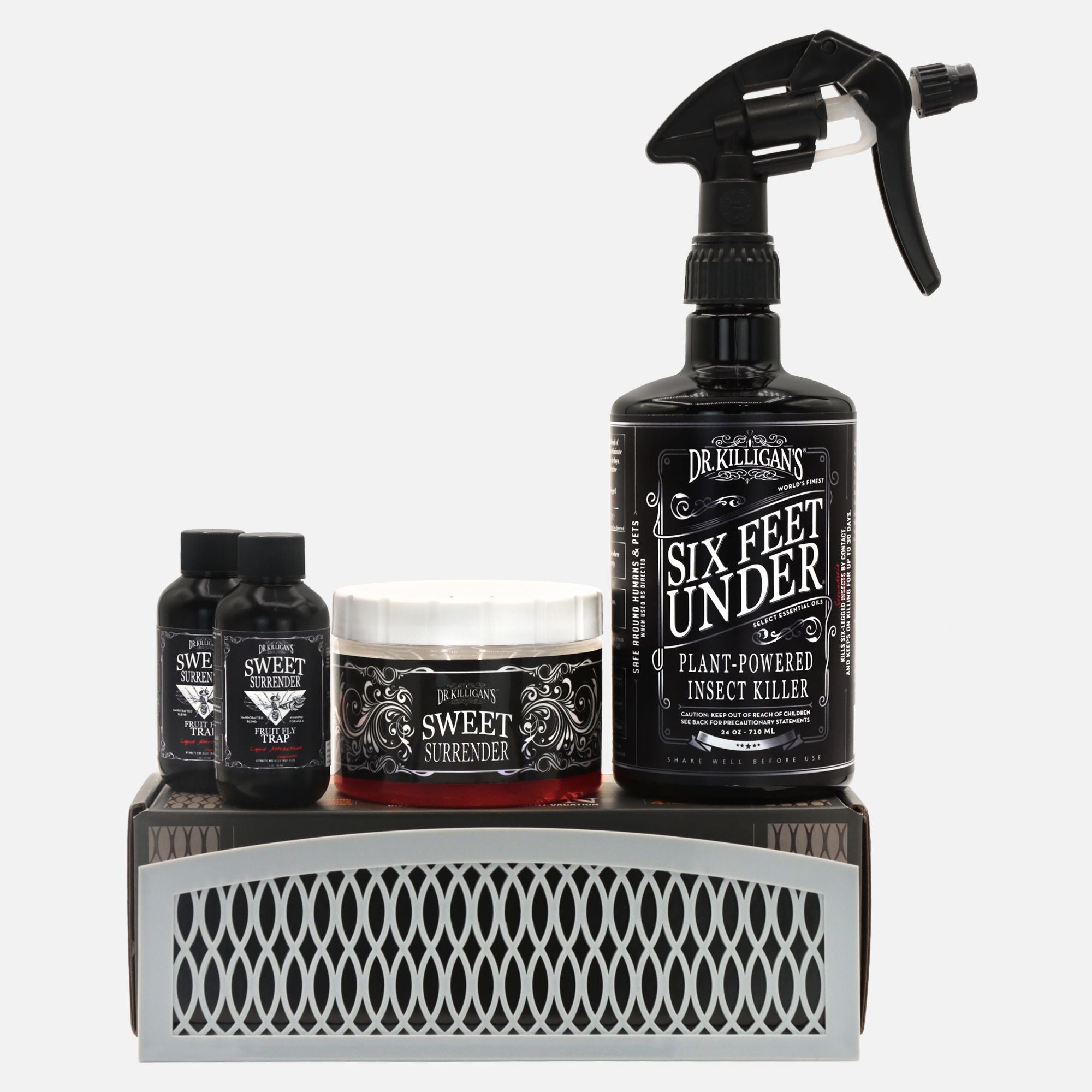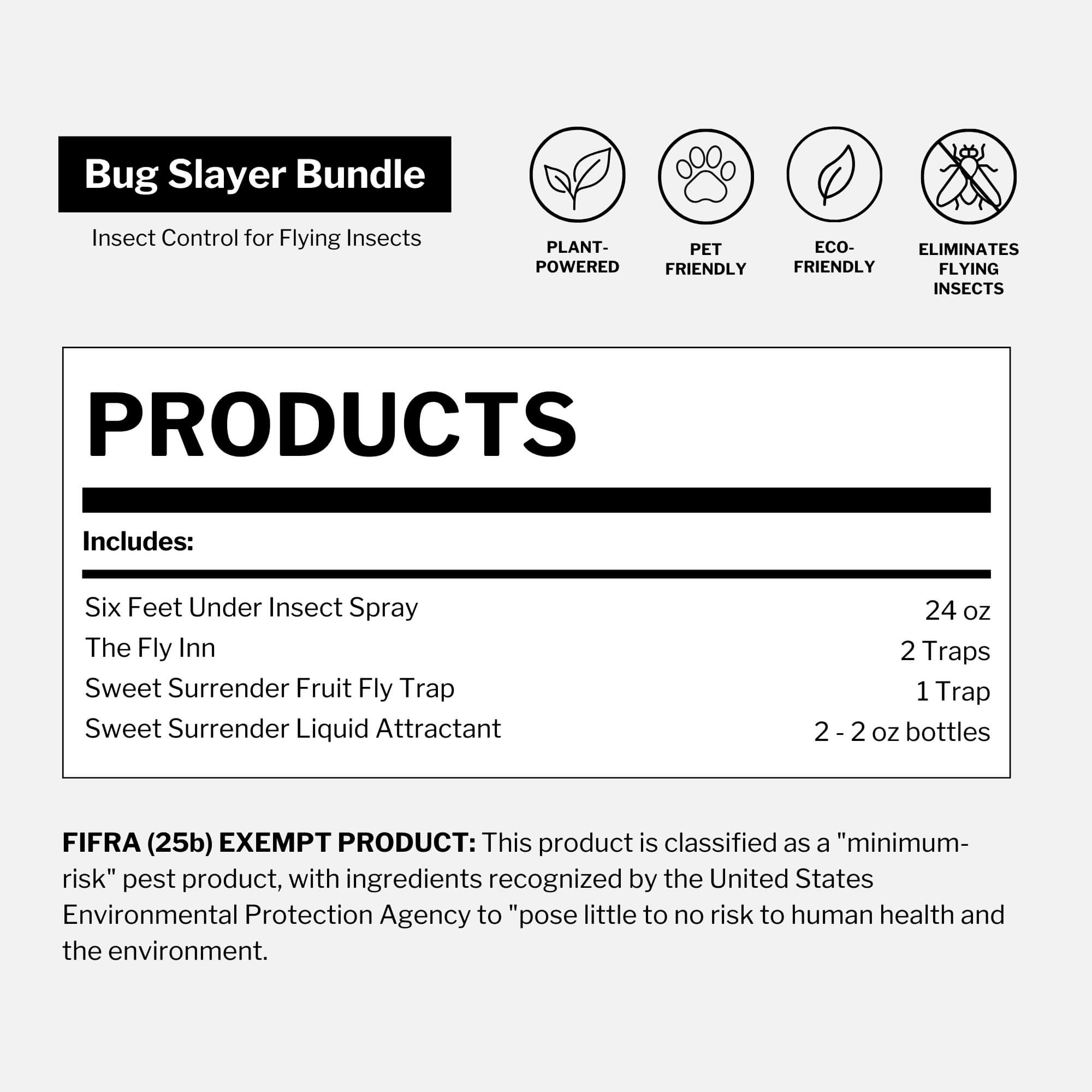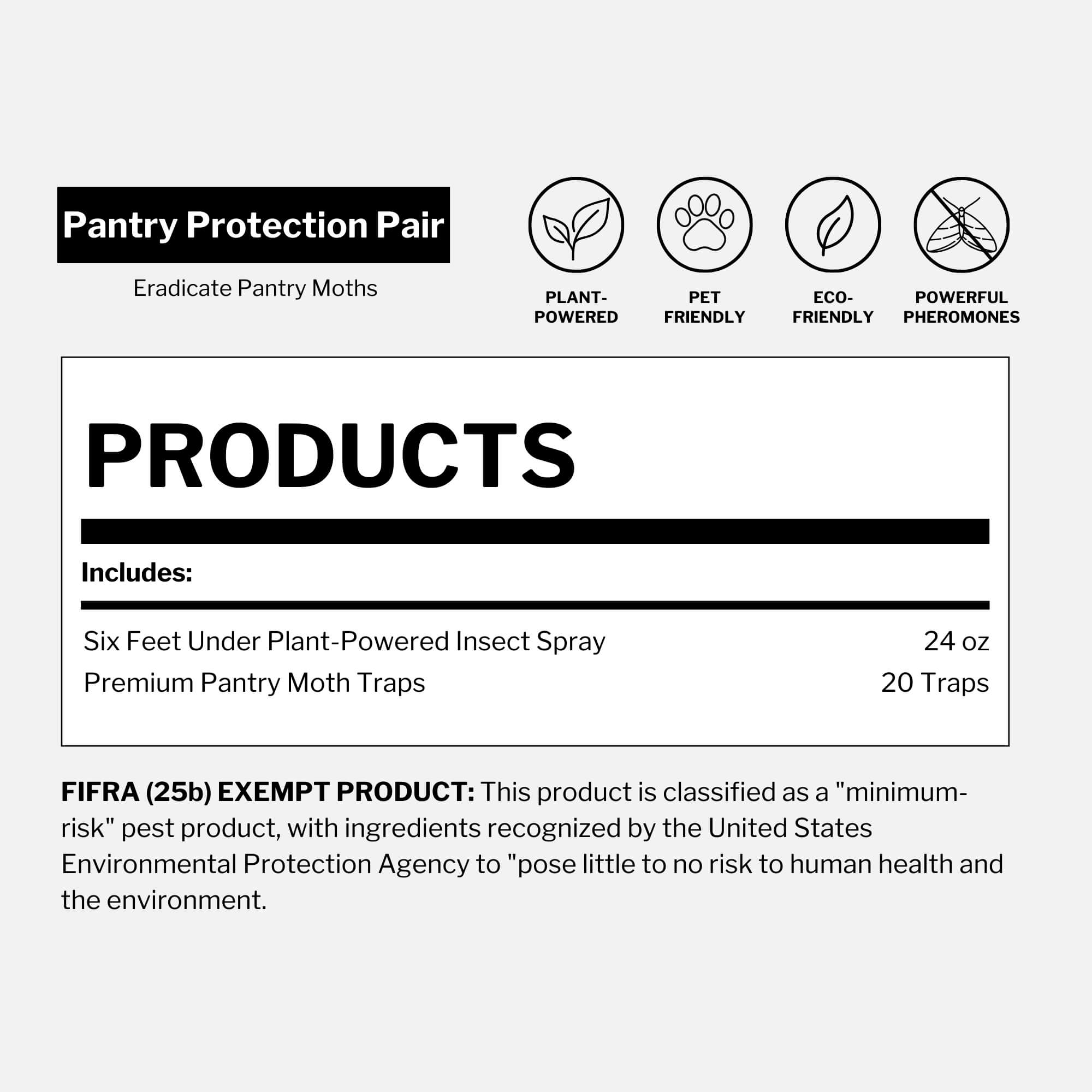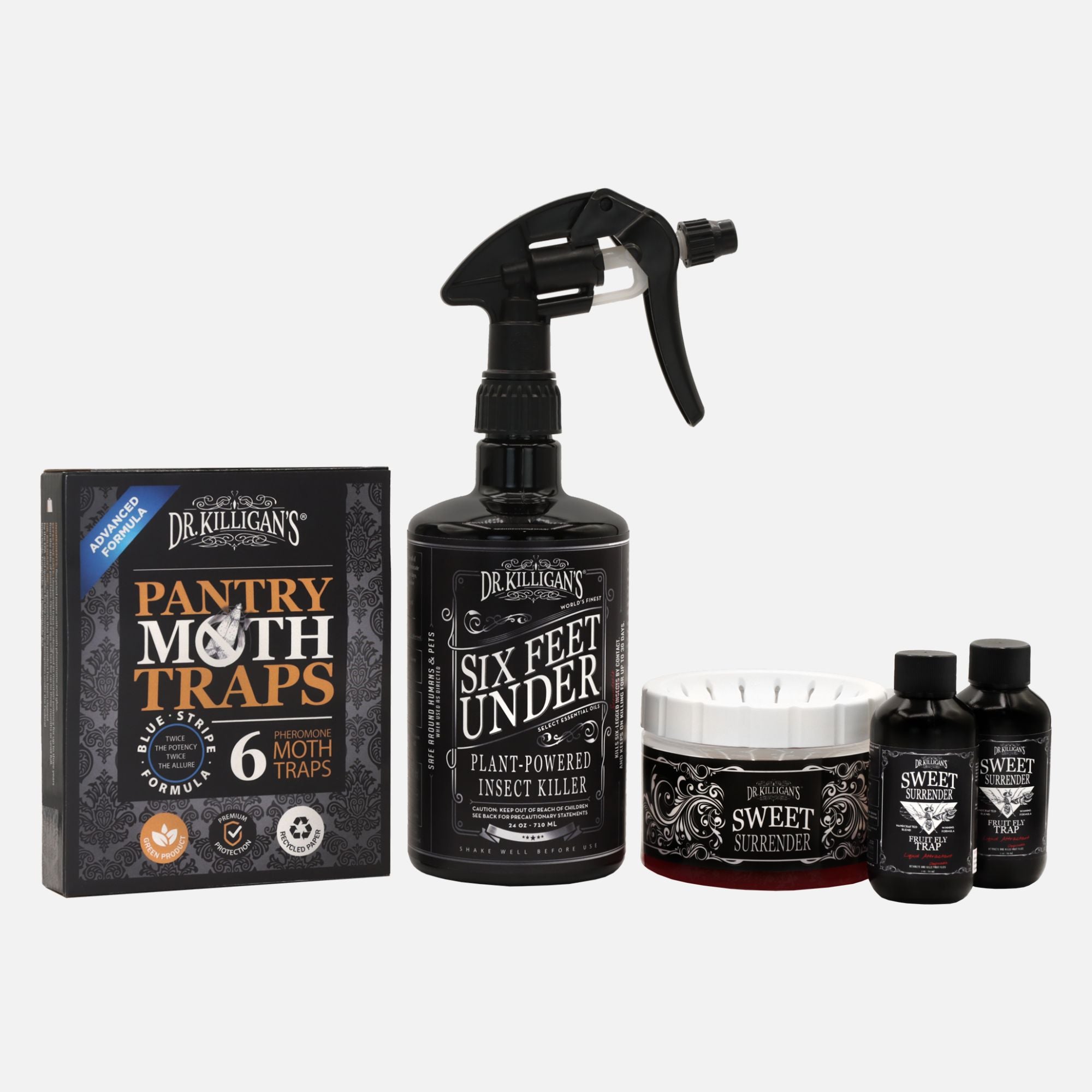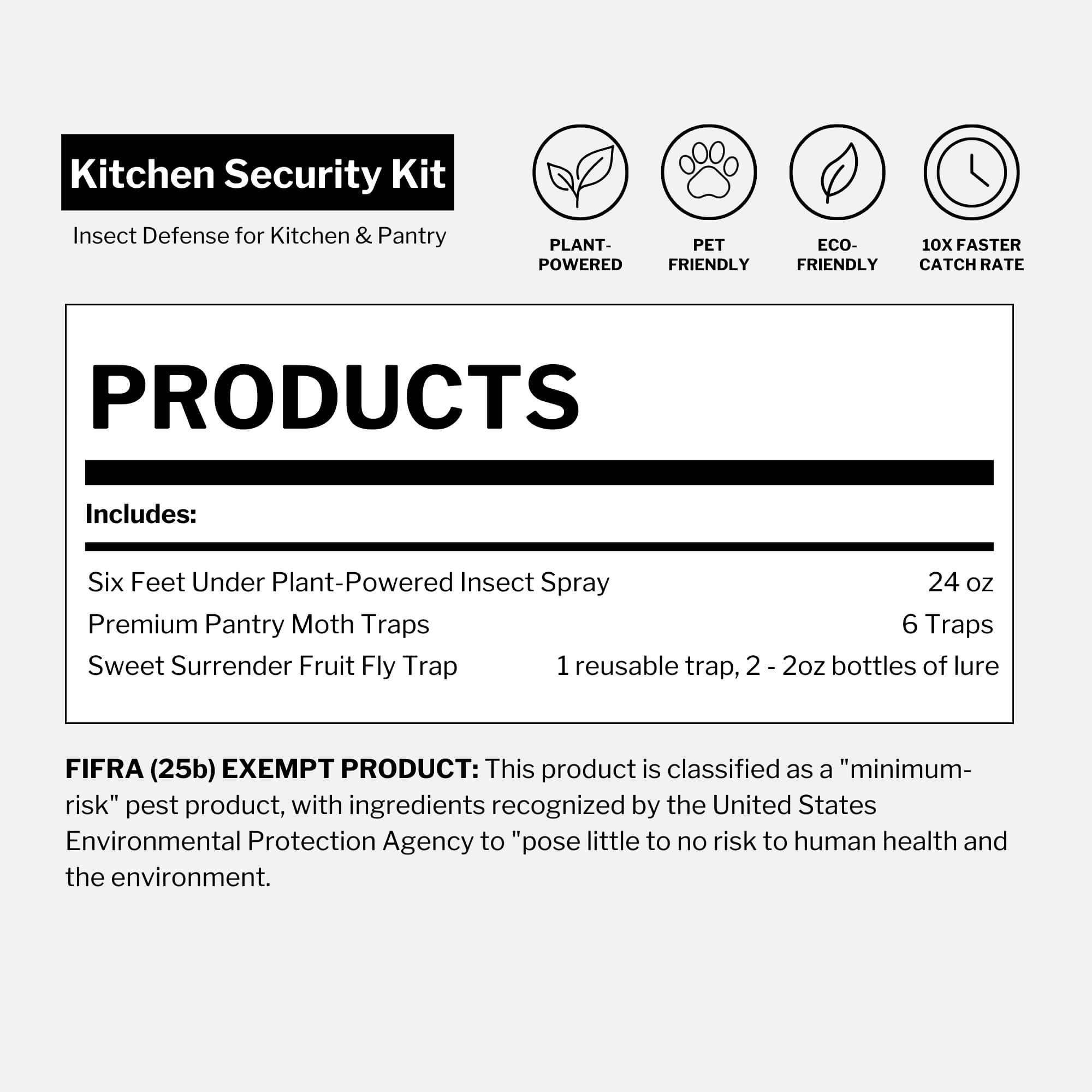Updated on April 10th, 2025
If you've discovered moths in your cereal or rice, you're likely wondering: What is the pantry moth life cycle—and how long do pantry moths live?
In this guide, we’ll explain the four pantry moth life cycle stages, how long each stage lasts and how to prevent future infestations.
Pantry moth life cycle: How long they live and when to act
One moth can lay up to 400 eggs—and each stage plays a role in a full-blown pantry infestation.
The pantry moth’s life cycle is short but destructive. Even though a single moth lives only 30 to 300 days, it can lay hundreds of eggs in that time. A sole moth can do considerable damage to your pantry and the food it contains.
Here are details about each stage:
Pantry moth egg stage: Brief but prolific
During this stage, about a week, their activity is dormant. The main issue is with how many eggs there are. When laid, there can be up to 400 of them and chances are you will not see them. Moth eggs are not visible to the naked eye until they are ready to hatch into larvae. The other issue is that to survive, the adult moth must lay them near a source of food; a bag of flour, a bag of beans or rice, a box of cereal, an improperly sealed bag of pet food—anywhere the moth has access to.
How long can pantry moth eggs remain dormant? Pantry moth eggs usually hatch within 4 to 7 days under optimal conditions. However, cooler temperatures can delay this process. A study on the greater wax moth (Galleria mellonella) found that eggs stored at 10°C developed more slowly and had reduced viability. While not the same species, it suggests pantry moth eggs may also remain viable for several weeks—especially in cool, undisturbed areas like unopened pantry goods.
Larvae stage: Most destructive phase of pantry moth life cycle
When an egg hatches, the larvae will feed on the source of food around them. Therefore, moths will lay their eggs as close to the source as they can. Thus, you will be unaware that you have a moth infestation until you begin to see the larvae within the food in your pantry. At that point it is too late. You must discard the food and proceed with cleaning procedures. After the larvae have eaten enough—about one to two weeks—they will find a quiet corner, form a cocoon and enter their pupal stage
Pupae stage: When pantry moths go dormant again
After the larvae have grown and found their way to a resting place, they spin thin webs and create a cocoon so they can grow into an adult moth. As the pupa grows, it is once again dormant. This stage lasts around two weeks. Once complete, the cocoons are hatched and you have an adult moth.
Adult moth: How long do pantry moths live and reproduce?
Adults can be a nuisance but are relatively harmless. Their job right now is to mate and lay eggs. After that process is complete, they will not live much longer. However, that life continues through the possible hundreds of eggs the moth laid.
Quick look: Pantry moth life cycle timeline
- Egg stage: 4-7 days (dormant)
- Larvae stage: 2-3 weeks (most active and damaging)
- Pupae stage: ~2 weeks (in cocoons)
- Adult stage: 1-2 weeks (for mating and laying eggs)
- Total lifespan: 30-300 days, depending on conditions
Note: The total lifespan of 30–300 days reflects variations caused by environmental factors. Cooler temperatures and limited food access can prolong any stage—particularly the larval or pupal phases—extending the overall life cycle well beyond typical estimates.
How to keep pantry moths out of your food pantry
If you live in an area that is prone to moth activity, there is good news. You can do something about moths even before you get them in your home. Understanding the life cycle of a pantry moth will aid you in what you can do. Use these preventive measures so you never have to deal with them in the first place.
Keep your pantry clean and sealed
Pantry moths won’t thrive in a clean, well-maintained space. To reduce the risk of infestation:
- Store dry goods (including pet food and birdseed) in airtight containers
- Rotate food stock regularly to use older items first
- Clean up crumbs and spills immediately
Note: If you find moths in your closet or on your clothes, they’re likely clothes moths—not pantry moths.
Check food and cabinets regularly
As adults, moths do not only come in through an open front door or holes in your home. The food you bring in is susceptible to infestation even before it leaves the grocery store.
To reduce risk:
- Inspect dried goods at the store for holes, eggs or larvae
- If in doubt, freeze items for one week to kill any hidden eggs
- Regularly inspect and clean your pantry—even if no activity is visible
Use preventive measures that work
During the life cycle of a moth, it is never more susceptible to preventative methods than it is in its adult stage. The idea of prevention is to keep them from breeding and laying eggs. However, sprays are toxic and many DIY methods are ineffective and temporary. You need a proven method for capturing and disposing of these moths before they can create a new batch of moths.
The final word on pantry moth life cycles

So, what is the life cycle of a pantry moth and when is the best time to rid your pantry of them? As stated, the adult phase of the moth’s life cycle is the most crucial. To rid your home of pantry moths, Dr. Killigan’s Premium Moth Traps are an effective method to deal with these pests.
Beauty meets function. Dr. Killigan’s Premium Moth Traps are designed to look as good as they perform, with sleek packaging that blends seamlessly into your pantry. Each trap remains effective for up to three months once opened, offering long-lasting protection without harsh chemicals. Safe for your family, your pets and the planet.




